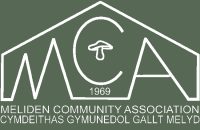Meliden Parish Records
Until the first full National Census of 1841, parish registers were the only written records of ordinary people. Because the registers recorded legitimacy and place of abode, they could be used to help resolve all manner of disputes and were kept safely under lock and key in the parish chest—usually three different locks with a key for the incumbent and each of the wardens. Data protection!
Some record-keeping existed before 1538 but Henry VIII decreed that every parish must begin recording every baptism, marriage and burial. Gwaenysgor’s registers appear to be complete from 1538 but Meliden’s don’t start until 1602 for baptisms and burials and a year later for marriages. There are other gaps in the Meliden registers, the largest is between 1627 and 1685 (59 very troubled years) and then again 1687-1691 (3½ years) and 1735-1741 (6 years). This is a great loss to family researchers since they also cover Prestatyn and Nant which were part of the old parish of Meliden at that time.
As a precaution against loss or tampering, annual returns were sent to the diocesan Archdeacon or Bishop—known as the Archdeacons’ or Bishops’ Transcripts. They sound a good way of safeguarding the information but in fact, when we compare the vestry records with the Bishops’ Transcripts, there are sometimes discrepancies and omissions. The Civil Registration of Births, Marriages and Deaths in Wales and England started on 1st of July 1837 and it has been a legal requirement to send in returns ever since but Churches and Chapels still continue to keep records.
Until 1812, the entries were made on blank parchment pages sewn into books and the further you go back in time, the more difficult they are to read—especially before 1741 because all the entries were made in Latin. The Curate in Charge at St. Melyd’s between 1598 and 1613 was the Revd. Roger Thomas who entered everything as it happened. He didn’t use a page for baptisms and another for funerals and so on—no neat columns—every page is different. Here is one of his entries:

It reads:
Infans Edwardus Mutton filius Richardi Mutton
de Meliden sepultus fuit decimo Septimo 1605
dies praedictis January Anno Domini Ut Supra
Translation:
Infant Edward Mutton son of Richard Mutton
of Meliden buried has been ten (and) seven 1605
day aforesaid January Lord’s Year as above
1605 is written at the top of the page but we would consider that to be January 1606 because until 1752, the first day of the year was March 25th—Lady Day. You may think the Revd. Roger Thomas’s writing is challenging but once you have become accustomed to his abbreviations, he is easy compared with the Revd. John Kuffyn who was Curate in Charge at Meliden between 1628 and 1649. This is the Revd. Kuffyn at his best. Can you read it? He wrote pages of the stuff!

It reads:
Margarreta verch Thomas ap Hugo
Griffith Baptizata erant
vicessimo die mensis Augusti
Ano dom 1629
Translation:
Margaret daughter of Thomas ap Hugh
Griffith Baptised was
twentieth day month August
Year Lord 1629
Apart from the Bishops’ Transcripts, the church registers were usually the only copies and very precious. When fire-proof safes came onto the market in the 1820s, the old Parish Chests lost their purpose. In 1976, our registers were transferred to the County Council to be held in custody for the Representative Body of the Church in Wales. Facsimiles were made by the Clwyd Record Office and those are now kept in the vestry safe—I wonder what’s in the parish chest.
